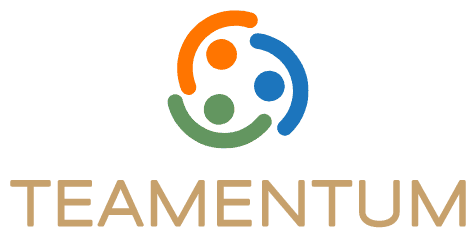Open dialogue is the lifeblood of a successful organization. In companies where communication flows freely, employees feel empowered to share ideas, voice concerns, and provide valuable feedback. However, simply encouraging dialogue isn’t enough—it must be done in a way that is healthy, purposeful, and actionable. Without these key elements, conversations can become unproductive, and feedback can go unheeded, resulting in frustration and disengagement.
In this article, we’ll explore how organizations can foster open, constructive communication and how leaders should act on the feedback they receive to create a thriving and inclusive workplace.
Why Open Dialogue is Crucial
Think about a team brainstorming session where everyone feels comfortable sharing their wildest ideas—some may seem outlandish at first but could spark the next big innovation. That’s the power of free-flowing and transparent communication.
Here’s how open dialogue transforms workplaces:
– Promotes innovation: When employees feel safe to share ideas and opinions, they contribute to creative problem-solving and innovation.
– Boosts engagement: Transparent dialogue shows employees that their voices matter, leading to increased motivation and job satisfaction.
– Identifies problems early: Open communication allows leaders to hear about issues before they escalate, helping them address potential obstacles proactively.
– Fosters trust: When feedback is sought and acted upon, trust between employees and leadership strengthens, creating a positive workplace culture.
Building a Foundation for Open Dialogue
For dialogue to be effective, it must be encouraged and structured in a way that ensures it’s productive. Here are steps to create a culture of open, healthy communication in the workplace:
1. Create Psychological Safety
Psychological safety is the foundation for all meaningful conversations. It’s the kind of environment where employees feel comfortable expressing their thoughts, opinions, and even criticisms without fear of negative consequences. In organizations with high psychological safety, people are more likely to take risks, admit mistakes, and share new ideas.
How to build it: Leaders should emphasize that mistakes and differing opinions are opportunities for learning. Normalize feedback and open discussion as part of daily operations, and explicitly state that differing views are valued and necessary for growth.
2. Encourage Regular Feedback Channels
Formal and informal channels for feedback are necessary to maintain consistent communication. Whether through one-on-one meetings, team check-ins, anonymous surveys, or open forums, -opportunities must be created for employees to share their thoughts.
How to encourage feedback: Create a mix of feedback opportunities—scheduled reviews (quarterly or biannually), pulse surveys to capture real-time feedback and casual open-door policies. Consider using digital tools to facilitate ongoing communication, especially in remote or hybrid work environments.
3. Practice Active Listening
Listening is an integral part of open dialogue. Leaders need to practice active listening, which means fully concentrating, understanding, responding, and remembering what is being said. When employees feel heard, they are more likely to continue contributing and sharing their insights.
How to do it: Leaders should engage with empathy and patience, ensuring they are not distracted by other tasks. Summarize what’s been shared to ensure clarity, and ask questions to further explore ideas or concerns. Non-verbal cues such as eye contact, nodding, and open body language reinforce the message that leaders are truly listening.
4. Foster a Culture of Respect
Open dialogue only works when it is built on respect. Employees should feel that their input is valued and respected, even if their feedback isn’t immediately implemented. Disrespectful or dismissive behaviors can quickly erode trust and discourage future dialogue.
How to maintain respect: Reinforce respectful communication norms across the organization. Teach employees to engage with each other constructively, avoiding blame and focusing on problem-solving. In team meetings, leaders can model this behavior by ensuring all voices are heard and maintaining a respectful tone in discussions.
5. Drive Purposeful Conversations
Open dialogue is not about letting everyone talk for the sake of talking. It should have a purpose—whether to solve a problem, gather feedback, or generate ideas. Purposeful conversations ensure that feedback leads to actionable outcomes rather than unstructured venting.
How to ensure focus: Set clear objectives for meetings or feedback sessions. Encourage teams to bring concrete examples or solutions, and guide conversations toward constructive outcomes. Use structured formats for discussions, such as “start, stop, continue” frameworks or solution-based brainstorming, to give conversations direction.
Turning Feedback Into Action: How Leaders Should Respond
Receiving feedback is only half the equation. To truly encourage open dialogue, leaders must demonstrate that the feedback is being heard and, more importantly, acted upon. Here’s how leaders can effectively respond to the feedback they receive:
1. Acknowledge and Show Appreciation
Feedback, especially when critical, requires vulnerability from employees. Acknowledge their input by showing gratitude, even if the feedback is difficult to hear.
How to do it: Begin by thanking the individual or group for their honesty. A simple “Thank you for sharing this with me” shows that their perspective is valued, and it encourages further transparency.
2. Take Time to Reflect Before Reacting
Leaders should avoid responding immediately with defensiveness or dismissiveness. When receiving feedback, especially if it’s negative, take time to reflect before reacting.
How to do it: If necessary, acknowledge the feedback in the moment but request time to think it over before making any decisions. This shows thoughtfulness and respect for the input while allowing time to consider an appropriate response.
3. Be Transparent About Next Steps
Once feedback is received, employees want to know what’s going to happen with it. Transparency around how feedback will be used builds trust and keeps communication open.
How to do it: Be clear about what changes will be made as a result of the feedback and, where possible, provide a timeline for implementation. If certain feedback cannot be acted on, explain why, rather than leaving the issue unresolved or forgotten. For example, you might say, “This is a great idea, but we may not have the budget for it this quarter. Let’s revisit it during our next planning session.”
4. Act on Feedback Where Possible
The most impactful response to feedback is action. Whether it’s making a small adjustment or enacting a larger policy change, when employees see their input leading to tangible outcomes, they are more likely to continue contributing.
How to do it: Identify areas where quick wins are possible—changes that can be implemented easily and have an immediate impact. Larger, more complex issues should be tracked and communicated clearly to ensure progress is visible. Leaders should also consider forming cross-functional teams to address major feedback, involving employees in the process of finding solutions.
5. Close the Loop
After taking action on feedback, it’s crucial to circle back and share the outcome with the team. This reinforces that feedback is not just heard but leads to meaningful changes.
How to do it: After changes are implemented, communicate them to the organization or specific teams. For example, you might send a follow-up email or hold a brief meeting to explain how their feedback shaped decisions. This reinforces a sense of ownership and partnership in improving the organization.
6. Regularly Review and Reassess
Open dialogue and feedback should not be one-time events. Regular review of feedback ensures that communication channels remain open and that employees continue to feel heard.
How to do it: Establish regular intervals for feedback assessment. Leaders can use annual or quarterly surveys, team retrospectives, or individual check-ins to review ongoing concerns and ensure feedback is consistently integrated into decision-making processes.
Maintaining Momentum: Creating a Feedback Loop
To truly build a culture of open dialogue, organizations must integrate feedback into their ongoing processes. This creates a self-sustaining loop where feedback is regularly solicited, acted upon, and reviewed. Here are a few strategies for maintaining this momentum:
– Ongoing Feedback Platforms: Implement digital platforms that allow employees to give feedback anytime, not just during scheduled reviews. Tools like Slack channels for feedback, anonymous suggestion boxes, or real-time feedback platforms can keep the conversation alive.
– Feedback Champions: Appoint team members or managers to act as “feedback champions” who encourage communication and help ensure it remains a part of team culture.
– Regular Reflection Meetings: Schedule regular reflection meetings where teams review feedback from the previous period, assess progress, and brainstorm new ideas.
A Culture of Listening, Acting, and Growing
Healthy and purposeful open dialogue can transform an organization. When employees feel that their voices are not just heard but acted upon, they are more engaged, motivated, and invested in the company’s success. For leaders, the key is to listen deeply, act intentionally, and follow up consistently.
By fostering an environment of trust, transparency, and mutual respect, leaders can create a workplace where communication flows freely, and everyone feels empowered to contribute. With this foundation, organizations can continuously adapt, improve, and grow—one conversation at a time.

